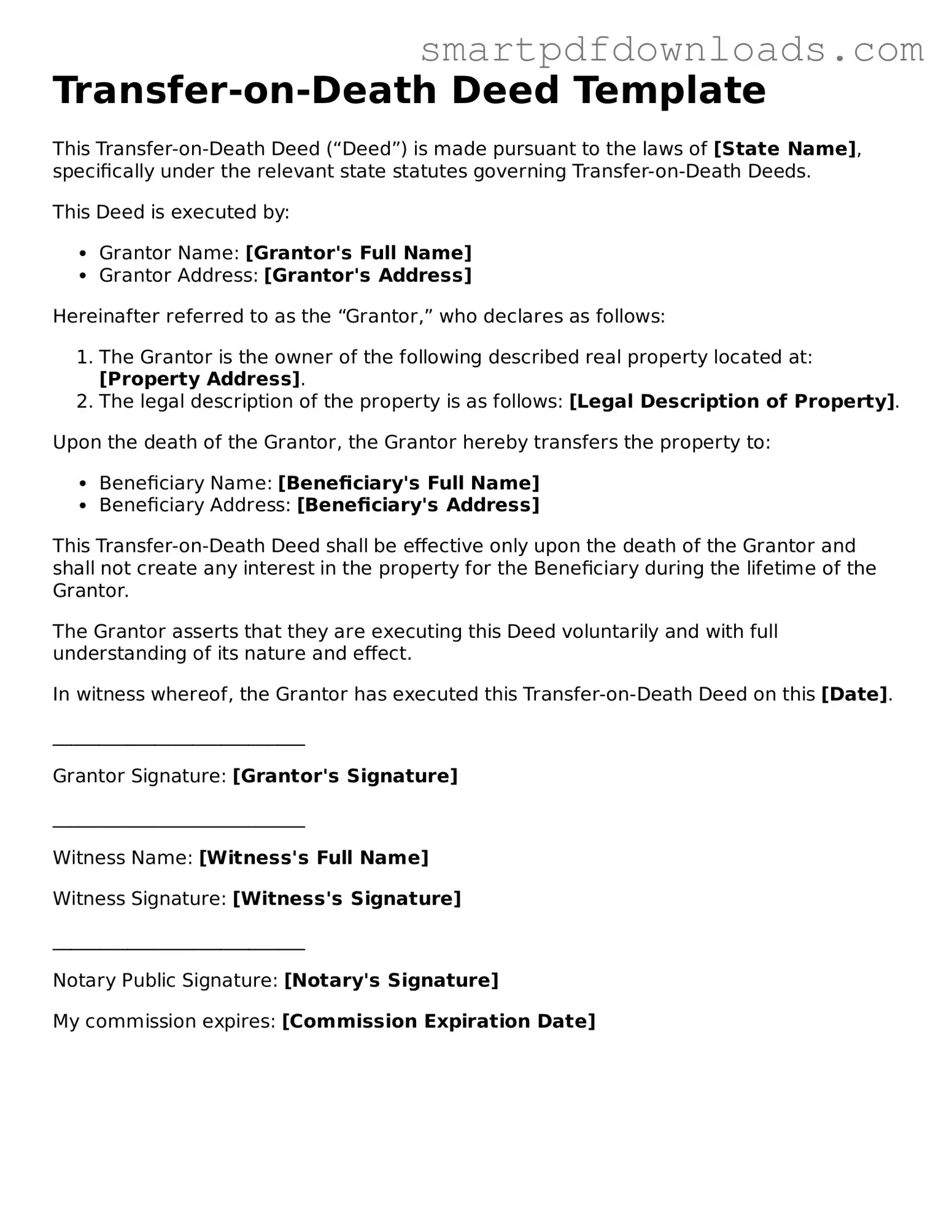Transfer-on-Death Deed Template
This Transfer-on-Death Deed (“Deed”) is made pursuant to the laws of [State Name], specifically under the relevant state statutes governing Transfer-on-Death Deeds.
This Deed is executed by:
- Grantor Name: [Grantor's Full Name]
- Grantor Address: [Grantor's Address]
Hereinafter referred to as the “Grantor,” who declares as follows:
- The Grantor is the owner of the following described real property located at: [Property Address].
- The legal description of the property is as follows: [Legal Description of Property].
Upon the death of the Grantor, the Grantor hereby transfers the property to:
- Beneficiary Name: [Beneficiary's Full Name]
- Beneficiary Address: [Beneficiary's Address]
This Transfer-on-Death Deed shall be effective only upon the death of the Grantor and shall not create any interest in the property for the Beneficiary during the lifetime of the Grantor.
The Grantor asserts that they are executing this Deed voluntarily and with full understanding of its nature and effect.
In witness whereof, the Grantor has executed this Transfer-on-Death Deed on this [Date].
___________________________
Grantor Signature: [Grantor's Signature]
___________________________
Witness Name: [Witness's Full Name]
Witness Signature: [Witness's Signature]
___________________________
Notary Public Signature: [Notary's Signature]
My commission expires: [Commission Expiration Date]
